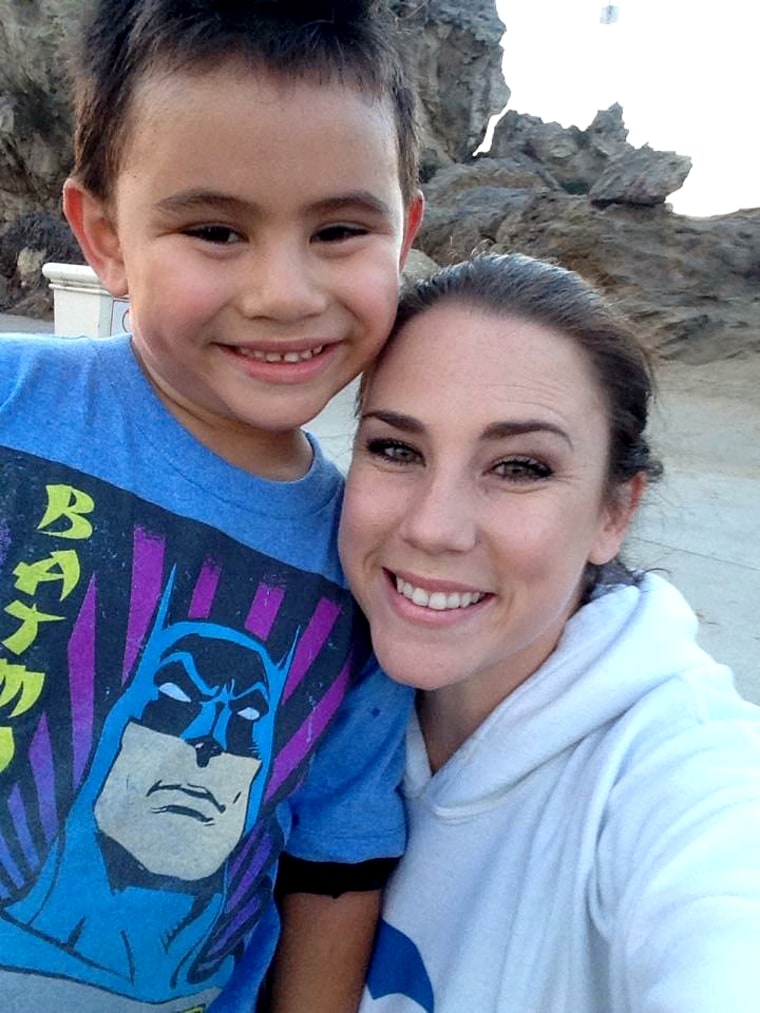Just about everyone experiences a headache at some point in their life, but a migraine isn’t a short-lived annoyance; it’s an often chronic and debilitating condition that affects 37 million adults in the U.S. — and, surprisingly, an estimated 5 million children, too.
There are few treatments available for migraine sufferers under 18, but a small study has found that Botox, which is already used to help adults with excruciating headaches, may also relieve pain in kids.
Manu Teave, 9, remembers the first time he got a headache — he was only 3 years old.
“It felt like somebody was punching me inside my head. All I wanted to do was lay down and go to sleep,” said Manu.
Over time his migraines worsened.
"I was throwing up. All I was doing was lying down. I couldn't go to sleep. I couldn't do anything," said Manu.

“How the heck can such a tiny person get migraines?” asked Jackie Teave, Manu’s mother. "Watching your child throwing up and in so much pain all the time is devastating.”
Eventually the Westminster, California native, now in fourth grade, was hospitalized for the condition.
Related: New Drugs May Stop Migraines Before They Start
Migraine symptoms often begin with throbbing head pain on one side of the head, but can affect both sides in children. Nausea, vomiting, dizziness, blurred vision, sensitivity to light and sound, and changes in temperament and personality can also occur.
About 20 percent of migraine sufferers, including children, also experience pre-headache symptoms, or auras, that often start an hour or so before a headache. Doctors are unsure why.
How long an episode lasts varies from individual to individual but, unlike adult migraines, which can carry on for up to four days, a child’s migraine generally varies between one hour and one day.
"It felt like somebody was punching me inside my head."
Children who get regular migraines don’t have many options beyond over-the-counter painkillers and some anti-seizure medications, the latter of which can be extremely hazardous. Children improve more readily with sleep so the best treatment is a nap in a quiet, dark room, but many simply suffer through the pain.
"These children are not going to school, they're not functioning, and they’re falling behind," said Dr. Shalini Shah, chief of pain medicine and director of pain services at UC Irvine Health. “So I decided to try Botox — my first patient did remarkably well so I started doing it more and more.”
Related: Botox Works As Well As Nerve Stimulator for Incontinence – Study
Botox, the brand name for botulinum toxin, is most popular for smoothing wrinkles, but is also FDA approved to treat a wide variety of conditions, including excessive sweating, overactive bladder, and migraine headaches in adults. In a new small pilot study, University of California, Irvine researchers led by Shah, found that Botox could ease migraines for kids and teens.
"Watching your child throwing up and in so much pain all the time is devastating.”
Kids and teens receiving Botox injections every 12 weeks over a five-year period had improvements in their frequency, duration and intensity of migraines. The participants in the study were between the ages of 8 and 17 with chronic migraines — defined as 15 migraines per month or having experienced migraines eight to 30 days a month.
After the treatment period, the kids reported that their symptoms were not as painful, as well as a decrease in symptoms, from two to 10 days a month, and reduced length of episodes from 7-24 hours to 15-30 minutes. In order for the treatment to be effective, the children needed 31 injections in different spots along the head and neck.
The study was presented recently at the Anesthesiology 2017 annual meeting.
When Botox is used for anti-aging, it can cost $400 or more. When used for medical reasons, it is often covered by insurance.
Manu tried Botox last year. He now gets injections every 10 weeks.
"I saw a night and day difference," said Teave. "He's back in school. He's playing sports. And he 's playing with his brother."
Shah encourages rigorous testing to ensure the safety and effectiveness of Botox, in hopes that this will be a mainstay treatment for pediatric migraine headaches in the near future.
“Our goal is to go to the FDA and change labeling status,” says Shah. “The results are remarkable. Hopefully we’ll soon be able to offer it as a validated treatment.”